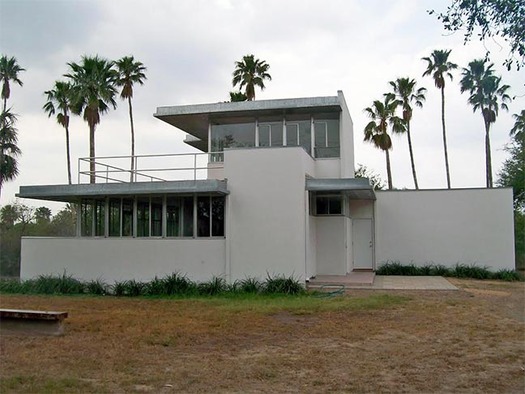
March 23, 2014
The Astrodome and the Challenges of Preservation

The Astrodome, today. Photo: Mark Lamster
If you’ve been reliant on the national media, there’s a good chance you’re under the impression that the Astrodome is slated for imminent destruction, if it’s not already gone altogether. Such was the tenor of press reports last November, when Harris County voters rejected a $217 million adaptive reuse plan that would have remade the stadium into an all-purpose facility. Those reports were inaccurate. As I report in a feature for the Dallas Morning News, the dome is still standing, and there are no plans for either its rehabilitation or its demolition. It sits, instead, in a state of nebulous limbo, “a derelict symbol of the future, unsure of what tomorrow will bring.”
What happened? There were several factors (read the story for a full explanation, and note the sidebar with a list of regional works under threat), one being that the Astrodome was a victim of the Tea Party’s war on public spending; deeply conservative suburban Harris County voters opposed to the reuse plan were able to defeat it in a low-turnout election. A majority of Houstonians, however, are opposed to demolition. The challenge ahead will be to harness the creative, financial, and political will to develop a new plan for saving it for the future.
Among the various lessons of the Astrodome saga is that it’s too easy to fixate on the tired argument over whether modern architecture is worth saving. As I write, “Too often, public debate on the future of modern works is framed around the subject of aesthetics — on whether these monuments of steel and glass and concrete are “beautiful” or “ugly.” That subjective argument can be a needlessly contentious distraction, as appearance is rarely a governing factor in the determination of a landmark’s fate. Instead, a range of issues including stewardship, economics, land values, material condition, building code compliance and patterns of use generally prove decisive.”

Richard Neutra, Kraigher House, Brownsville, Texas. Photo: Ambroso Villarreal Jr.
If you track the common problems facing modern landmarks, you will find tha failures of stewardship and institutional negligence typical. Richard Neutra’s Kraigher residence in Brownsville, along Texas’s border with Mexico, is a good example of this phenomenon. The 1937 house, one of the first International Style homes in the region, was built for a Pan-Am pilot-turned-executive making hops to South America. It was restored just ten years ago, but the unhappy divorce of its intitutional guardians has left it an orphan once again.
Of course, modernism does require advocacy. In Dallas, where land values are high, it is too common to see a modest modern home come down, to be replaced by a McMansion. Programs to educate the public and realtors about modern works have proven fairly succesful, but the unfortunate reality is that by the time advocates find out about threatened homes, it’s too late—even if there is a community desire and market to save them.
As I write this, I fear it is an obituary for John Johansen’s Stage Center Theater in Oklahama City, which seems to have lost its final appeals for clemency. It’s loss will be a great missed opportunity for Oklahoma City, a chance to transform one of its few iconic works of architecture into a civic centerpiece. It is, in a sense, a victim of the same forces that led to its creation: in the 1960s, the city implemented an urban renewal plan authored by I.M. Pei that led to the clearing of much of its downtown, including sereral landmark theaters. The Stage Center was their replacement. Now it too is to be replaced, but this time for a banal office tower. That’s nothing but sad.
Observed
View all
Observed
By Mark Lamster
Recent Posts
A quieter place: Sound designer Eddie Gandelman on composing a future that allows us to hear ourselves think It’s Not Easy Bein’ Green: ‘Wicked’ spells for struggle and solidarity Making Space: Jon M. Chu on Designing Your Own Path Runway modeler: Airport architect Sameedha Mahajan on sending ever-more people skyward



